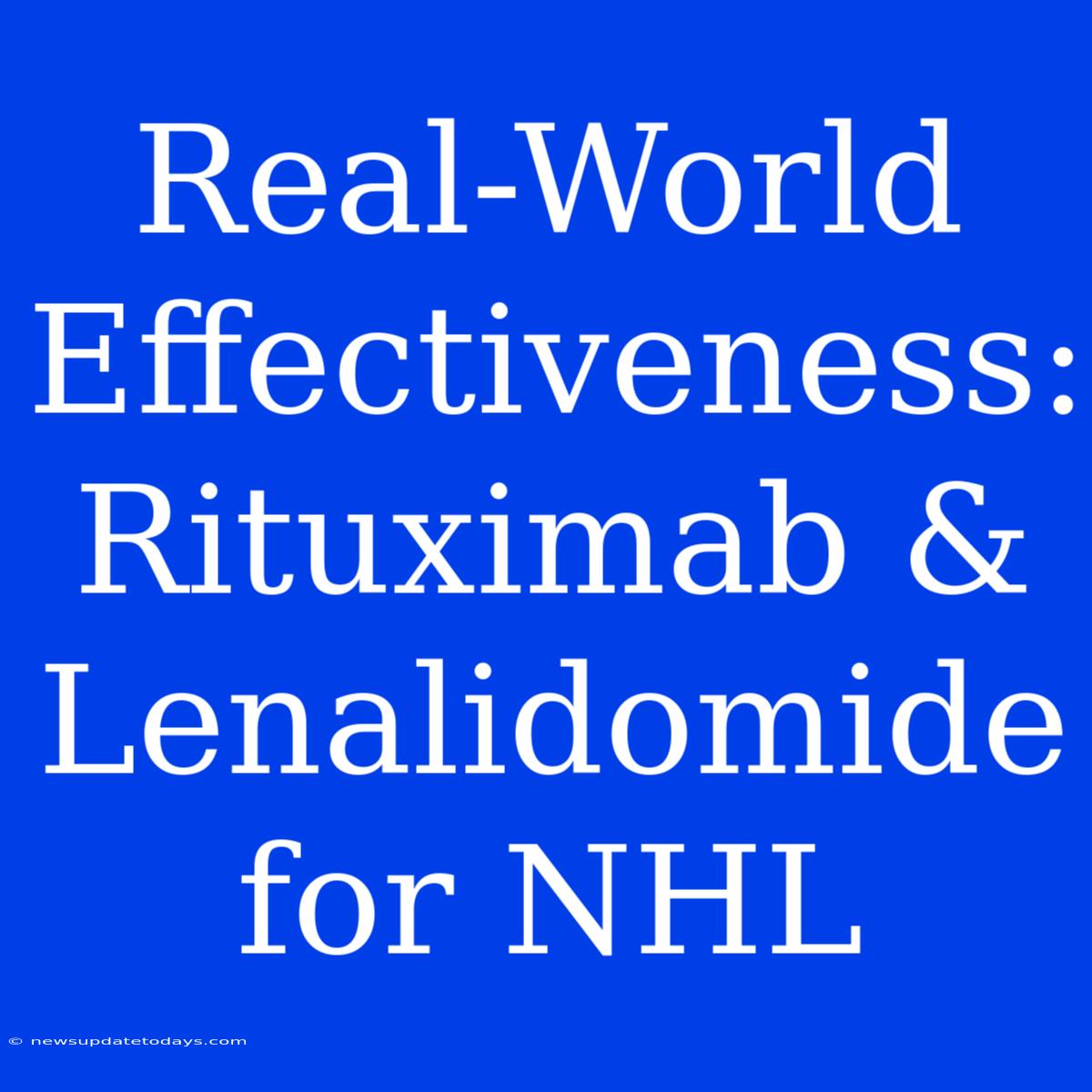Real-World Effectiveness: Rituximab & Lenalidomide for NHL
Non-Hodgkin's lymphoma (NHL) treatment is constantly evolving, with novel combinations offering improved outcomes. This article delves into the real-world effectiveness of the rituximab and lenalidomide combination in treating NHL, moving beyond clinical trial data to explore its application in diverse patient populations and practical clinical settings.
Understanding the Combination: Rituximab and Lenalidomide
Rituximab, a monoclonal antibody targeting the CD20 antigen on B cells, has revolutionized NHL treatment. Its mechanism involves directly destroying B cells and enhancing the immune response against them. Lenalidomide, an immunomodulatory drug (IMiD), works by modulating the immune system, inhibiting angiogenesis (blood vessel formation), and potentially directly affecting tumor cells. The combination leverages the synergistic effects of these two agents, leading to potentially enhanced efficacy.
Real-World Evidence: Beyond Clinical Trials
While clinical trials demonstrate promising results, real-world effectiveness considers factors often absent in controlled settings, such as patient heterogeneity, comorbidities, and adherence variations. Observational studies and large-scale registries provide valuable insights into the drug's performance in diverse clinical practice. These studies often reveal:
- Efficacy across various NHL subtypes: While initial trials may focus on specific NHL subtypes, real-world data illuminate the combination's effectiveness across a broader spectrum of diseases. This includes examining responses in patients with relapsed/refractory disease, where treatment options are often limited.
- Impact on patient populations with comorbidities: Clinical trials often exclude patients with significant comorbidities. Real-world studies help understand the efficacy and safety profile in patients with underlying health issues, providing crucial information for clinicians.
- Treatment tolerability and long-term outcomes: Real-world data offer a longer-term perspective on the combination's tolerability and potential long-term effects, including the risk of adverse events.
- Factors influencing treatment response: Studies identify factors, such as age, performance status, and specific genetic markers, that may predict response to rituximab and lenalidomide. This allows for more personalized treatment strategies.
Challenges and Considerations
Despite the benefits, challenges associated with rituximab and lenalidomide in real-world settings include:
- Cost and accessibility: The high cost of these medications can be a significant barrier for many patients, limiting access to optimal treatment.
- Adverse events: While generally well-tolerated, both rituximab and lenalidomide can cause various adverse events, requiring careful monitoring and management. These can range from manageable side effects to serious complications.
- Resistance development: Like any cancer therapy, resistance to rituximab and lenalidomide can develop. Understanding the mechanisms of resistance is critical for developing strategies to overcome it.
Conclusion: Informing Clinical Decision-Making
Real-world data on rituximab and lenalidomide in NHL are vital for refining treatment strategies and ensuring optimal patient care. By understanding the combination's effectiveness in diverse patient populations and addressing challenges associated with its use, clinicians can make more informed decisions, leading to improved outcomes for individuals battling NHL. Ongoing research and continued analysis of real-world data are essential to further enhance our understanding and optimize the use of this valuable treatment combination. Further investigation into predictive biomarkers to identify patients most likely to benefit will also contribute to more personalized and effective treatment approaches.

